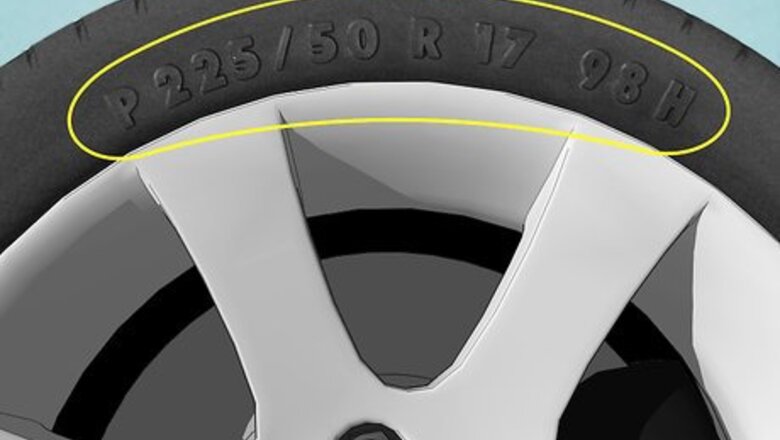
views
Understanding the First Half of the Series
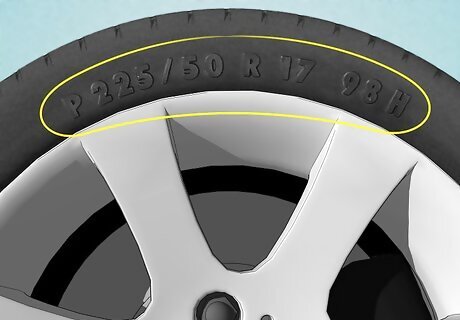
Find the series of numbers on the sidewall. Tires are manufactured with the tire size printed on the sidewall. The sidewall is the outer wall of the tire, rather than the tread that contacts the road. The size should be printed underneath the tire manufacturer name, just above the rim of the tire. For instance, the series may look like this: P 225 / 50 R 17 98 H
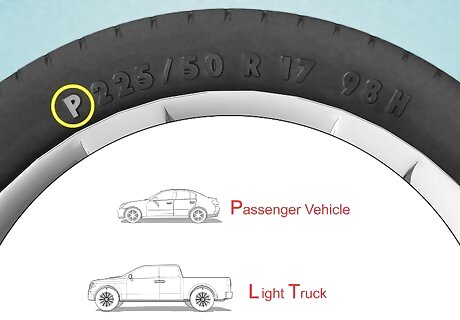
Recognize that the first letter denotes the service type. On some tires, the series of numbers begins with a letter. “P” stands for “P-metric” and denotes a passenger vehicle. “LT” stands for light truck, “T” means temporary spare, and “C” stands for commercial. If you're purchasing a spare or new tire, you'll need to choose the same service type as the rest of the tires.
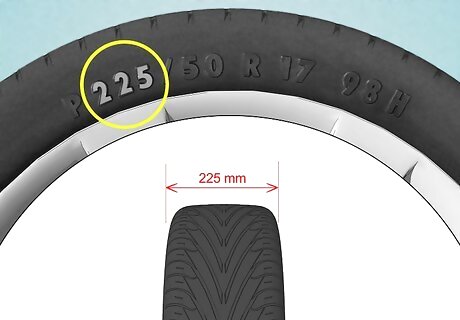
Note that the first 3-digit number identifies the tire width. The 3-digit number before the slash denotes the tire width, which is measured from sidewall to sidewall and corresponds to the tread that contacts the road. The measurement is given in millimeters, and all 4 tires must have the same width. For instance, if the first number is 225, the tire tread is 225 mm wide.
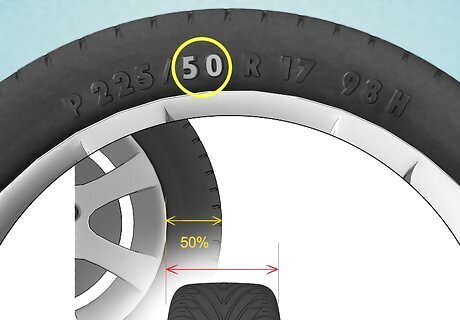
Understand that the following 2-digit number is the aspect ratio. The numbers after the slash indicate the aspect ratio, which compares the tire's section height with the tire's section width. If you're replacing only 1 tire, make sure it has the same aspect ratio as the others. For example, if there is a “50” after the slash it means the tire's section height is 50% of the tire's section width.
Figuring out the Second Half of the Series
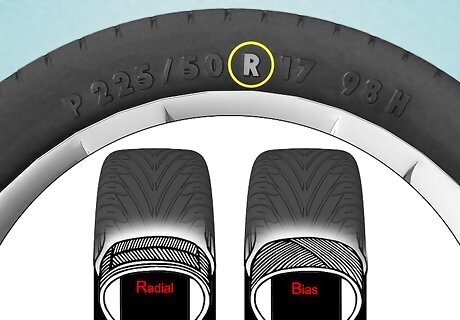
Understand that the next letter corresponds to the tire casing. After the aspect ratio, a single letter will be listed that denotes how the tire was constructed. “R” means radial construction, “B” stands for belted bias, and “D” means diagonal bias construction. Choose a spare or new tire with the same casing and construction as the rest.
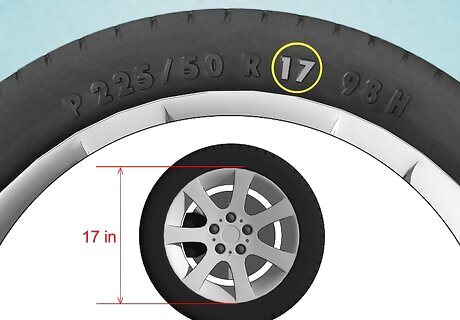
Recognize that the next 2-digit number tells the rim diameter. After the letter, there will be a 2-digit number. This number gives the measurement, in inches, of the rim diameter, which is essential to know if you're getting new rims or wheels. For instance, if the number is 17, your rims are 17 inches (43.2 cm) in diameter.
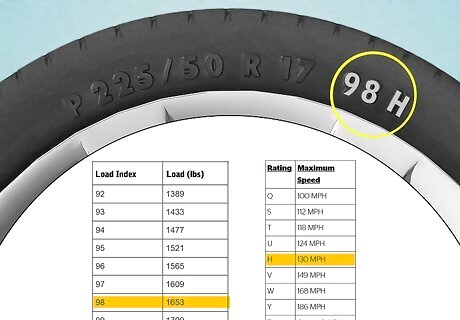
Note that the last combination is the load index and speed rating. The last combination of letters and numbers is called the service description. The load index refers to the load-carrying capabilities of a properly-inflated tire, while the speed rating tells you the maximum speed the tire can handle. The load index number corresponds with a load index chart, and does not tell you the weight in pounds. For instance, a load index of 98 can carry 1,653 pounds. Speed ratings are lettered A–Z and correspond to a speed rating chart. For example, the letter H indicates a maximum speed of 130 mph.











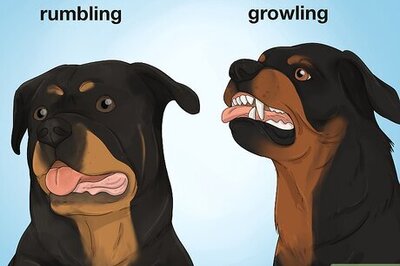




Comments
0 comment